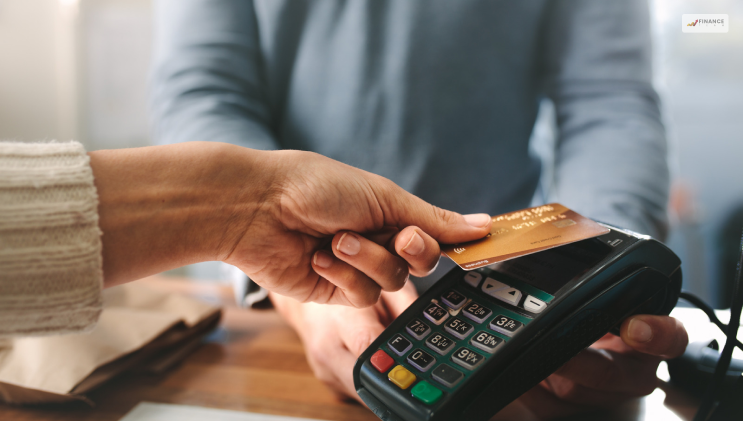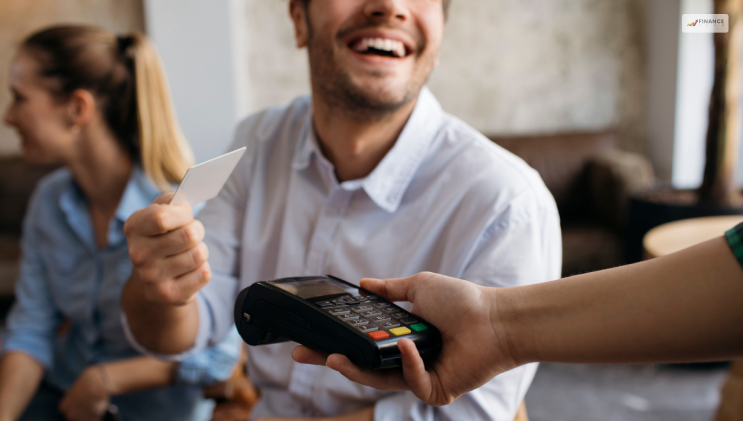- How Do Contactless Payments Take place?
- The Technology of Contactless Payments
- Impact Analysis of Contactless Payments in the US
- Stakeholder Benefits of Contactless Payment Adoption
- Regional Trends in Contactless Payment Adoption
- Australia
- Hong Kong
- Sweden
- Norway
- Netherlands
- Impact Analysis of Contactless Payment in Scandinavian Countries
- Which Countries Still Pay in Cash?
- Final Thoughts.......
The Impact of Contactless Payment on Cash Usage: Early-Stage Insights

Many developed countries still use cash at PoS. But its use is declining. Recently, we have seen many new technologies in the payment market. Their main task is to make our payment simple and hassle-free. These new technologies include credit and debit cards, contactless cards, digital wallets, and biometrics. But you might wonder, why is there a decline in the use of cash? Why are contactless payment on the rise? Experts say that the main reason why we prefer contactless payments is that they are fast. Also, it is secure and hassle-free. In this article, I have done an impact analysis of the disruptive rise of contactless payments.
Consequently, people now prefer these modes of payment in many places.
How Do Contactless Payments Take place?

Before an impact analysis, it is necessary to understand how contactless payment adoption is possible.
Most customers use a contactless EMV card to make a contactless payment. These cards have RFID technology. As a result, the merchant devices can detect devices with RFID tags. Then, merchants can send payment requests of the stipulated value.
After that, you just use a contactless card by bringing it close to the merchant device. Alternatively, you can also use your phone as a virtual contactless card.
The Technology of Contactless Payments

The merchant can send a payment request to the customer’s device. Or else, the merchant’s device programs an auto-debit of the stipulated value from the customer’s card. After that, the customer brings the card closer to the merchant’s device. The device prompts as it receives the amount from the card.
So, you must only bring your card close to the merchant’s system to pay as a buyer. It’s a big reason for the growing popularity of contactless payments.
Impact Analysis of Contactless Payments in the US

Experts say that the popularity of contactless payments is already on the rise in the US. However, it was aggravated by the pandemic. During this time, people did not want to make physical contact. So, contactless payments were their default option.
Now, more than 51% of Americans use any contactless payment methods. On the one hand, digital wallets such as PayPal and Apple Pay are the most popular. People are, however, using contactless cards as well. EMV cards issued lately are all contactless.
The impact analysis reveals that avoidance of contact played a crucial role in increasing contactless payments. Secondly, the rising purchasing power of millennials and Gen Z played the most fundamental role in making this method popular.
About 80% of US citizens under 28 years use at least one means of contactless payment. A study by Global Payments also notes that by 2029, Genz will fill 72% of the workplace positions.
Therefore, it is confirmed that their preferred payment method will be the most popular.
After impact analysis, I found something else. A third factor here is the growing interest among merchants in the USA in accepting contactless payments. As a result, people started using it too. In America:
- 58% of grocery stores use contactless payments
- 39% of the pharma stores have the means to accept such payments
- 38% of retail stores and chains are already using it
- QSRs are next in line, but 36% of restaurants already have contactless payment options available
Stakeholder Benefits of Contactless Payment Adoption

I found there are three critical stakeholders involved in a payment transaction. The consumers and merchants are the obvious, too. The third is banks.
What consumers get are accessible payment gateways. It saves them time. They can also earn cashback. In stores, they can beat the queues in less time too. Moreover, you don’t have to count cash or swipe cards if you choose contactless payments.
In this regard, customers mostly use contactless cards and wallets for hands-free payment.
Merchants are the next group of stakeholders in a payment transaction; at merchants, we can simplify and elevate a customer’s payment experience by enabling contactless payment options.
It improves brand loyalty. Alongside, it benefits brands like Walmart. Such brands profit because of the high number of purchases and not because of the sales margin in each sale.
So, impact analysis shows that contactless payments boost sales. It also reduces the cost of operations. Your store needs fewer people to manage the assets when the customer’s payment is directly deposited in your bank.
Strangely enough, as cash usage is declining, banks are also profiting. Impact analysis also shows that whenever you use a bank’s payment gateway, it’s a free promotion. So, you are promoting them by using their services. At the same time, they charge merchants a token fee for creating and maintaining digital business accounts.
Regional Trends in Contactless Payment Adoption
Many countries are disrupting the world of finance and micro-finance by adopting contactless payments. However, a detailed impact analysis shows that Australia, Norway, Hong Kong, China, and the USA are the forerunners of contactless payment adoption.
Australia

Accenture surveyed the payment behavior of Australians in 2022. It was found that only 13% of Australians use cash as their go-to payment method. Research also shows that 92% of the EMV transactions in Australia are contactless. No doubt, Aussies have disrupted the payment market.
Hong Kong

The trend from the Pacific has impacted South Asian nations like Hong Kong, too.
Hong Kong gave us one of the oldest contactless cards the world has ever seen. Their Octopus card influenced strong economies like China to become cashless, too. Digital wallets are the most used method of contactless payment in Hong Kong. People use vendors like AliPay, WeChat, Octopus, and others.
Sweden

In Sweden, it is not a crime for merchants to refuse payment in cash. You will rarely find an ATM. Most banks in Sweden do not offer cash transaction services. Experts performed impact analysis to find that it is one of the most advanced European countries, making trademarks in contactless payments.
Norway

Seven out of ten Norwegian customers prefer contactless payments. After Australia, Norway is second in line in using wearable paying devices. No doubt, Fitbit Pay is so popular here. But Google Pay, Garmin, and other apps are popular in Norway, too.
Netherlands

The Dutch make 33% of all payments done in Europe using smartwatches. They are not much into cards. Obviously, most Dutch don’t carry cash as well.
Impact Analysis of Contactless Payment in Scandinavian Countries

All Scandinavian countries have shown significant progress towards a contactless economy in the early stages. I find two reasons for the same. Their government is trying to limit cash usage to cut down on the resources and workforce used in it. The adoption of contactless payment in these countries is also high because of their banks’ strategies. Most federal banks in these countries try to give financial literacy to people. Once they understand the digital banking service correctly, they confidently start making contactless payments.
Which Countries Still Pay in Cash?
Cash is still the most popular currency in countries like Germany, Egypt, Romania, etc. After doing an impact analysis of the factors responsible for intense cash use, I detected two factors. Firstly, most people do not have bank accounts in emerging and poor economies. Secondly, some countries like Germany think that cash transactions are more secure.
There, the public has yet to gain profound knowledge of the benefits of contactless payments. I believe government policies play a significant role in making a country adopt contactless payment.
Final Thoughts…….
Cash is still a popular means of transaction. However, contactless payments are gradually disrupting the payments market. Naturally, the more developed countries have excelled in adopting contactless payment. Their governments emphasized contactless payments and shaped policies accordingly. However, contactless payments are still the go-to payment option for millennials and Gen Z. America made good progress in making contactless payments popular. Both users and merchants in America use contactless payment options. The US government is serious about it, too. So, there is a high chance that countries like the USA, Australia, or Norway will show the way for contactless payment to the world.
For More Financially Informative Article Click Below!!
All Comments
online png to eps converter
26 June, 2024
I was suggested this web site by my cousin. I'm not sure whether this post is written by him as no one else know such detailed about my trouble. You are incredible! Thanks!










